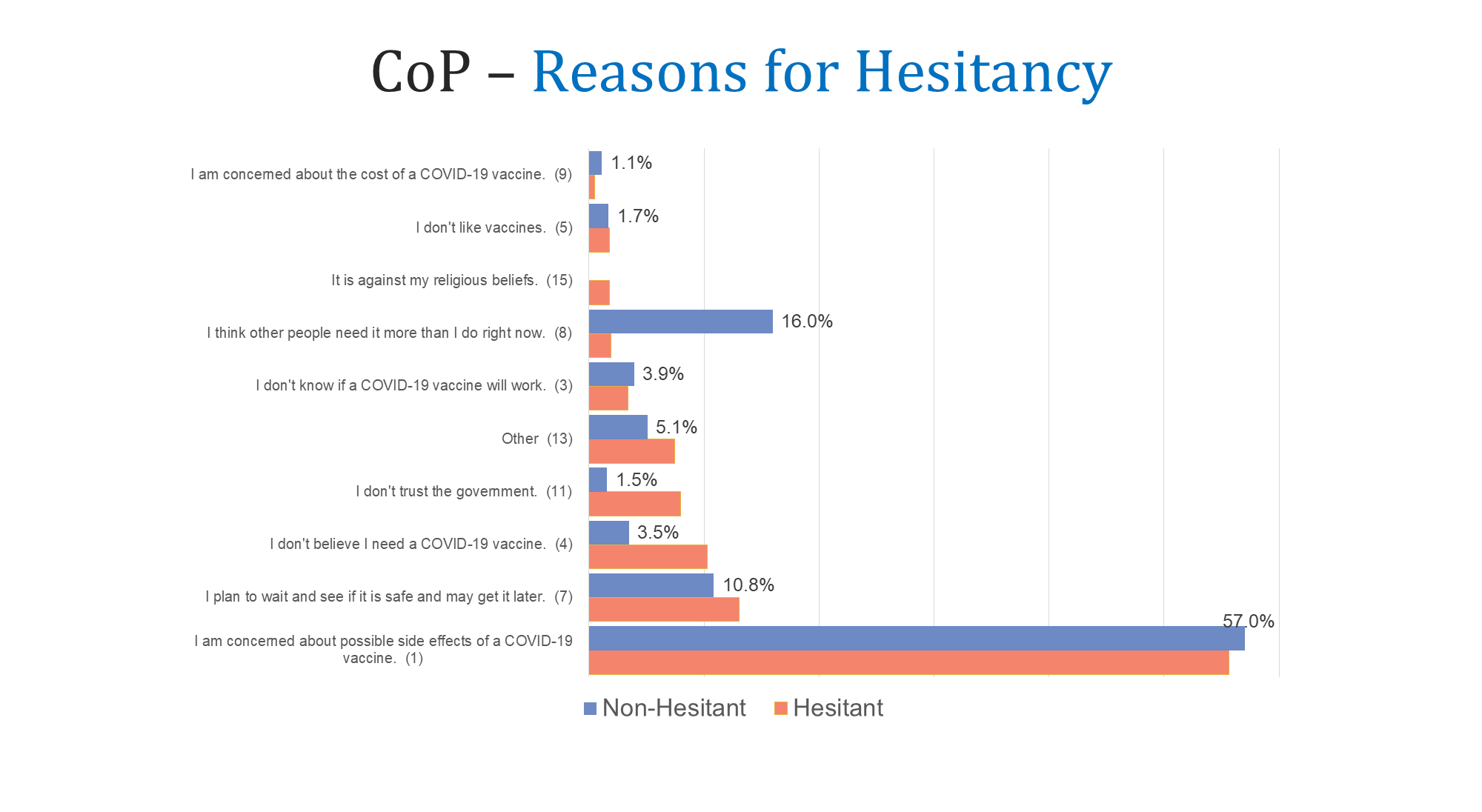Health Equity/Social Determinants of Health
Category: Abstract Submission
Health Equity/Social Determinants of Health VI
192 - Leveraging Social Media Analytics and Community Coalition to Combat COVID-19 Vaccine Hesitancy and Improve Vaccine Uptake in At-Risk Communities
Monday, April 25, 2022
3:30 PM - 6:00 PM US MT
Poster Number: 192
Publication Number: 192.413
Publication Number: 192.413
Yolande Pengetnze, MyPHI, LLC, Flower Mound, TX, United States
- YP
Yolande Pengetnze, MD, MS
MyPHI, LLC
Flower Mound, Texas, United States
Presenting Author(s)
Background: Social media vaccine misinformation is driving poor uptake of COVID-19 vaccines among low-income, minority communities. Current approaches to address online vaccine misinformation are typically isolated and not targeted.
Objective: - To characterize vaccine hesitancy across urban and rural counties in North Texas- To evaluate the impact of a data-driven community collaborative and social media campaign on COVID-19 vaccine hesitancy and uptake
Design/Methods: A quasi-experimental study of a Vaccine Community of Practice (VCoP) collaborative in 4 North Texas Counties, including 5 community-based organizations (CBOs), a aata partner (MyPHI), and a community convener (CFT. Timeline: 06/2021 - 11/2021Data Sources: * Facebook/Carnegie Mellon University Delphi Survey - daily survey of US Facebook users on COVID-19 indicators* Texas Department of State Health Services for COVID-19 vaccination rates* 2019 American Community Survey, for population-level denominatorsInterventions:* MyPHI creates Community Dashboard with insightful reports on zip-code-level vaccine hesitancy and vaccination rates, reasons for hesitancy and preferred sources of vaccine information, and monitors intervention impact* CBOs use reports to select zip codes for educational intervention and vaccine outreach (in-person/social media), tailored to zip-code-specific characteristics.* VCoP reviews data monthly and adjusts approach as indicatedOutcomes: 1) zip-code-level vaccine hesitancy and vaccination ratesAnalyses: describe vaccine hesitancy characteristics; compare before-and-after changes in vaccine hesitancy and uptake between intervention vs. non-intervention zip codes
Results: 28 zip codes were selected for VCoP, covering 1.3 million eligible unvaccinated people at baseline, ~56% of all eligible people. Baseline mean zip-code-level vaccine hesitancy rate was 19.5%. Reasons for hesitancy were concerns for side effect (57%), "Other people need more than me" (16%), "Wait-and-See" (11%). Most trusted sources of vaccine information were healthcare professionals (18%) and least trusted sources were politicians (1%). Vaccine hesitancy dropped by 18% and vaccination rates increased by 48% in intervention zip codes (vs. 5% drop and 31% increase in non-intervention zip codes, respectively; p< .01).Conclusion(s): Data-driven insights combined with coordinated community and social media outreach are associated with reduced vaccine hesitancy and increased vaccine uptake. Events combining social media education/awareness campaigns with in-person education and onsite vaccine clinics were associated with higher vaccine hesitancy conversion rates.
Preferred Sources of Vaccine Information among Facebook Users in North Texas.png) Data Source: Facebook/Carnegie Mellon University Delphi Survey, June 2021
Data Source: Facebook/Carnegie Mellon University Delphi Survey, June 2021
Reasons for Vaccine Hesitancy Among Facebook Users in North Texas Data Source: Facebook/Carnegie Mellon University Delphi Survey, June 2021
Data Source: Facebook/Carnegie Mellon University Delphi Survey, June 2021
Objective: - To characterize vaccine hesitancy across urban and rural counties in North Texas- To evaluate the impact of a data-driven community collaborative and social media campaign on COVID-19 vaccine hesitancy and uptake
Design/Methods: A quasi-experimental study of a Vaccine Community of Practice (VCoP) collaborative in 4 North Texas Counties, including 5 community-based organizations (CBOs), a aata partner (MyPHI), and a community convener (CFT. Timeline: 06/2021 - 11/2021Data Sources: * Facebook/Carnegie Mellon University Delphi Survey - daily survey of US Facebook users on COVID-19 indicators* Texas Department of State Health Services for COVID-19 vaccination rates* 2019 American Community Survey, for population-level denominatorsInterventions:* MyPHI creates Community Dashboard with insightful reports on zip-code-level vaccine hesitancy and vaccination rates, reasons for hesitancy and preferred sources of vaccine information, and monitors intervention impact* CBOs use reports to select zip codes for educational intervention and vaccine outreach (in-person/social media), tailored to zip-code-specific characteristics.* VCoP reviews data monthly and adjusts approach as indicatedOutcomes: 1) zip-code-level vaccine hesitancy and vaccination ratesAnalyses: describe vaccine hesitancy characteristics; compare before-and-after changes in vaccine hesitancy and uptake between intervention vs. non-intervention zip codes
Results: 28 zip codes were selected for VCoP, covering 1.3 million eligible unvaccinated people at baseline, ~56% of all eligible people. Baseline mean zip-code-level vaccine hesitancy rate was 19.5%. Reasons for hesitancy were concerns for side effect (57%), "Other people need more than me" (16%), "Wait-and-See" (11%). Most trusted sources of vaccine information were healthcare professionals (18%) and least trusted sources were politicians (1%). Vaccine hesitancy dropped by 18% and vaccination rates increased by 48% in intervention zip codes (vs. 5% drop and 31% increase in non-intervention zip codes, respectively; p< .01).Conclusion(s): Data-driven insights combined with coordinated community and social media outreach are associated with reduced vaccine hesitancy and increased vaccine uptake. Events combining social media education/awareness campaigns with in-person education and onsite vaccine clinics were associated with higher vaccine hesitancy conversion rates.
Preferred Sources of Vaccine Information among Facebook Users in North Texas
.png) Data Source: Facebook/Carnegie Mellon University Delphi Survey, June 2021
Data Source: Facebook/Carnegie Mellon University Delphi Survey, June 2021Reasons for Vaccine Hesitancy Among Facebook Users in North Texas
 Data Source: Facebook/Carnegie Mellon University Delphi Survey, June 2021
Data Source: Facebook/Carnegie Mellon University Delphi Survey, June 2021